Reviews: In the Disservice of Biblical Archaeology: An Uncritical Study Bible
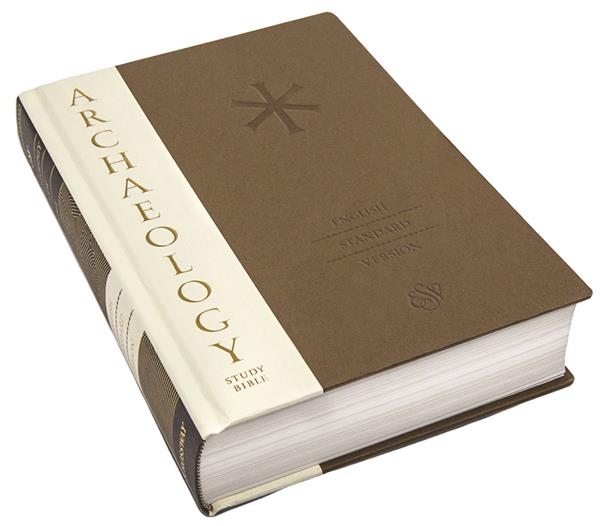
Archaeology Study Bible is an annotated Bible translation (English Standard Version) with articles and notes geared toward demonstrating how archaeology illuminates the biblical text. “Archaeology” is taken in its broadest possible sense, meaning “the study of the land and its history,” up to the Roman period. Too often study Bibles concentrate on the textual, theological, or literary background of biblical books and give only short shrift to archaeological data. This volume corrects that gap.
It gathers an abundance of valuable information about biblical Israel in a format suitable for the general reader; it is beautifully presented and lavishly illustrated, sprinkled throughout with maps and charts. Nevertheless, there is room for criticism with respect to the intended audience.
That the audience is Protestant Christian should already be obvious from the terms “Old Testament” and “Intertestamental” as well as from the absence of discussion of the deuterocanonical literature (aside from brief mentions in the background essays). But the intended audience is even narrower. As the general editors state in the introduction, all of the contributors to this study Bible “hold to classical evangelical orthodoxy in the historic stream of the Reformation”—in other words, they identify as conservative evangelical Protestants—“and affirm the divine inspiration, truthfulness, and authority of both Old and New Testament Scriptures in their entirety as the only written Word of God, without error in all that it affirms, and the only infallible rule of faith and practice. They also affirm that God’s Word clearly teaches that the only means of salvation is through the Lord Jesus Christ” (p. vii).
These theological affirmations limit the volume in two ways. First, it limits the pool of contributors available. Second, and more important, it limits the academic worth of the volume (and, I would argue, its value to readers) by drastically curtailing the range of scholarship that can be presented and the way the biblical text is approached.
The first objection is easily illustrated. The List of Contributors consists almost entirely of white Protestant males who teach at conservative Christian colleges and seminaries. The list includes only one woman (Catherine L. McDowell, Gordon-Conwell Theological Seminary [Charlotte]) and one Hispanic (Steven M. Ortiz, Southwestern Baptist Theo-logical Seminary). Conspicuously absent are any Israeli scholars, who are usually considered the foremost experts on archaeology of the land of biblical Israel. This deliberate lack of alternative voices compromises the merit of the volume.
The second criticism is weightier. Because of the theological stance, many issues and problems are simply not addressed, including the relationship of archaeology and the Bible. Examples abound; I will present two.
Throughout the volume, the historicity of the biblical narrative is never challenged. As a major example, consider the treatment of the Book of Joshua. The introduction to the book states, “As biblical archaeologists attempt to reconstruct the historicity of the events of this book, they have been able to provide a more accurate reading of the message of Joshua in its literary construct as well as substantial proof of the historicity of the accounts contained in the book” (p. 283).
Many archaeologists would dispute the phrase “substantial proof,” substituting “no proof.”1 None of the issues of the Book of Joshua—the sources, etiologies, or different theories concerning the occupation of the land—are brought out in the Archaeology Study Bible. The reader would never be aware that these questions even existed.
Another example concerns the authorship of the Pentateuch. The Introduction to Genesis states: “The almost universal claim until recent times among both Jews and Christians was that Moses wrote Genesis and the rest of the Pentateuch. Moses lived much later than the events described in Genesis, but he would have used earlier sources passed down to him, such as genealogical lists. Other OT writers attribute the Pentateuch to Moses (e.g., Joshua 1:7-8; Judges 3:1-4). In the NT, Jesus unequivocally accepts Mosaic authorship of the Pentateuch (Mark 7:10; Mark 12:26). Jewish writings, like the Talmud, and early church teachings almost unanimously agree on Mosaic composition” (p. 13).
There is no mention of source criticism; in fact, the only mention of possible sources in the Pentateuch is the suggestion that Moses may have used them in writing the Torah. Again, a comparison with The New Oxford Annotated Bible is instructive; it contains three full pages devoted to modern source theories of the Pentateuch.2
It seems to me that avoiding the questions and issues of modern scholarship does a disservice to readers regardless of their faith stance. This shying away from the genuine meaty questions of biblical scholarship lessens the value of this volume tremendously. While the editors make clear from the beginning their faith assumptions, which is to their credit, the overall refusal to engage with controversial issues that take front-and-center in other study Bibles deprives the reader of any opportunity to engage, in an intelligent way, with biblical scholarship that does not share the editors’ faith stance. This creates an unfortunate feedback loop: the reader comes with certain expectations; those expectations go unchallenged by reputable scholars and authority figures in biblical studies; and the reader leaves with his/her previous positions comfortably verified.
These criticisms mean that the Archaeology Study Bible cannot be recommended outside of the narrow audience for which it was intended. It is not suitable for use in most classrooms, and even pastors and church Bible study groups would wish to consider the book’s faith position before adopting it for their own use.
Reviews: The Careful Dialogue between Archaeology and the Bible
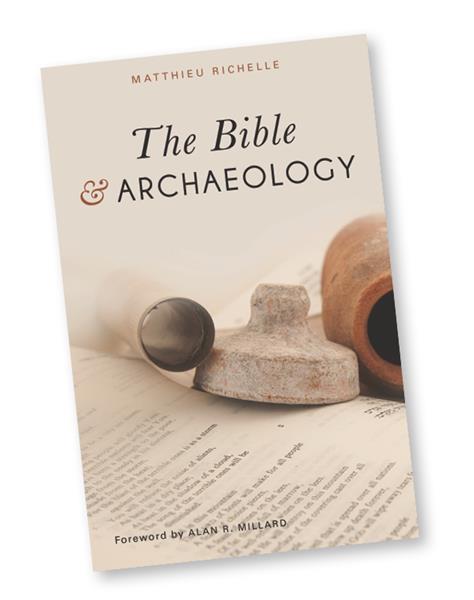
Matthieu Richelle’s book The Bible and Archaeology comes at a time of increased interest in bringing Biblical archaeology to a wider audience. Others have recently published on this topic, but what sets Richelle’s book apart is that the author is an epigrapher, studying ancient inscriptions, originally under the direction of his teacher André Lemaire, who is well known to readers of BAR. Thus, although the majority of books on archaeology and the Bible mention the relevant ancient texts only in passing, Richelle makes them the centerpiece of much of his book.
He begins by explaining that the book is aimed at readers who are interested in “looking beyond sensationalist claims” and who want to learn what underlies the various controversies involving the Bible and archaeology. The opening chapter then discusses what it is that archaeologists discover, with topics ranging from ancient cities to evidence for daily life, including religious practices, trade, and international relations.
All of this is very well done, especially when it comes to explaining how some of the ambiguities inherent in archaeology and archaeological interpretation come to be, including differing interpretations of the same object or inscription. Throughout, Richelle shows his easy familiarity with appropriate Biblical verses, applying them in virtually every instance and example that he brings up, whether discussing objects, sites, or events.
Richelle’s expertise comes to the forefront in the second chapter, titled “When Stones Speak.” Here he briefly discusses the principal types of inscriptions and texts that have been found, from royal stelae (such as those erected by Neo-Assyrian kings, including Shalmaneser III), to clay tablets, papyri, other scrolls, and ostraca (inscribed potsherds). He further provides insight into some of the difficulties involved in deciphering, interpreting, and dating such texts, and he covers the problem of possible forgeries, which he examines in some detail on specific examples, such as the James Ossuary.
This then allows Richelle to address, in his third chapter, the similar difficulties faced by archaeologists, including (but not limited to) problems of interpreting the material that has been discovered during excavation. He provides additional examples beyond those cited in the first chapter, including a number of recent finds and heated discussions from just the past few years. These three chapters together form a coherent whole, making up the first half of the book.
In the second half of his book, Richelle takes on the task of discussing more directly the relationship between the Bible and archaeology. He lays out the various possible approaches in the fourth chapter, including using archaeology simply to prove or disprove the Biblical text, which he says is unreasonable to do, or considering Syro-Palestinian archaeology as an independent discipline altogether, as some have suggested. He ends the chapter by describing some real-life scenarios and suggesting the need for a balanced approach.
The fifth chapter is billed as a case-study of David and Solomon but focuses quite specifically on the pros and cons of Israel Finkelstein’s suggested Low Chronology. This subject remains hotly debated in academic circles, dealing with Finkelstein’s proposition that much of what was previously thought to be tenth-century material, linked to David and Solomon, should instead be redated to the ninth century and perhaps linked to later rulers, such as Ahab. As Richelle notes in the end, a compromise, known as the “Modified Conventional Chronology,” seems to have the most adherents at the moment.
In chapter 6, Richelle brings in the relevant textual evidence, and/or lack thereof, under the general heading “Archaeology and Writing in the Time of David and Solomon.” Here he includes a brief consideration of why there are so few inscriptions dating to the tenth and ninth centuries, as well as whether there was a “national” script or a standardized script at the time, and the “proper” context for some of the Biblical narratives.
Overall, this is a very readable introduction to the topic, packed with information and replete with scholarly citations in the endnotes for those intrepid readers who wish to pursue the issues further. Nevertheless, as a small and slim volume, it is necessarily limited in what it can cover, which means that some readers might wish for additional information and resources. Richelle is fully aware of this and provides just such a list toward the end of the book, for those hungry for more.
Reviews: The Human Drama of St. Paul
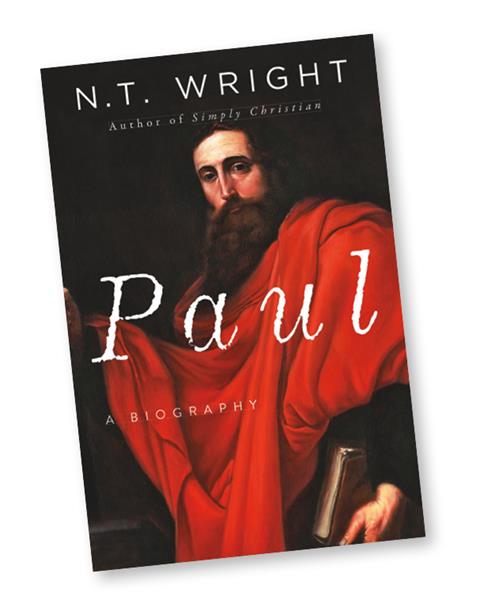
While the famous movie line proclaims, “I am Spartacus!” some readers of the apostle Paul have been more likely to lament that they are Eutychus—the poor youth from Troas who fell to sleep and then to death from an upstairs window while trying to follow the dense and endless words that flowed from the apostle. Thankfully, Paul revived Eutychus and then taught on until daybreak (Acts 20:7–11).
A different revival is now available from N.T. Wright, the rehumanizing and “re-storying” of the apostle to the Gentiles, through Paul: A Biography.
“It begins,” says Wright, “with an ancient tale of sex and violence.” This evocative and unexpected line launches readers into Wright’s first chapter. It pertains to the ancient Jew that Saul of Tarsus likely upheld as a hero: Phineas, whose “zeal” for Yahweh’s Law led him to religious violence. Such violent zeal was also a driving force for Saul of Tarsus—at least until that fateful Damascus road experience that “shattered [his] wildest dreams and, at the same split second, fulfilled them.”
As such quotations demonstrate, Wright has a rare ability to encapsulate dense learning into memorable sentences that are both accessible and arresting. And while Wright has written stacks of books on Paul, his latest stands out as a true biography rather than a distillation of Paul’s letters or theology.
While academics will profit from it, it is designed for a much broader audience, the “Eutychuses” of the world who have failed to hang with Paul as his words come at us in rap-id-fire succession. For this reason, Wright’s biography forgoes all footnotes, and each chapter begins with a simple, helpful map to plot Paul’s progress around the Mediterranean.
As in any Paul biography, there are challenges. How will one integrate the narrative of Acts? For his own part, Wright does not shy away from Acts as history, even while recognizing Luke’s unique aims and interests. How will one fill in the “blank spaces” of Paul’s life? Had he once been married? Did he ever make it to Spain? What about his death? While Wright is careful to separate the evidence from mere speculation, he also offers guarded guesswork on all such questions. For instance, he is more open than he once was to the notion that Paul may have been released from Roman imprisonment (where Acts leaves off) to make it all the way to Spain.
While I found the lack of footnotes refreshing, I wish the publisher had placed Scripture references in parentheses within the text, rather than burying them in the book’s endnotes. And as with Paul himself, one sometimes wishes Wright had a slightly more demanding editor to shorten run-on sections and repetitious themes. Even so, such “Eutychus moments” are somewhat rarer in this book than in Wright’s other massive volumes. One may even read it safely near an open window, late at night—as I did with enjoyment.
The most moving aspect of the book is Wright’s treatment of Paul as a wounded, prayerful, sometimes broken pastor—rather than the mere thinker, writer, or “detached brain box” for whom he is occasionally confused. Paul’s humanity comes out in Wright’s treatment of the so-called Corinthian crisis, which he takes as bumping up against a bout of spiritual assault, imprisonment, and depression that supposedly occurred in Ephesus.
Like many pastors, Paul wondered if his work was all “in vain.” And he felt the sting of having poured his heart into a congregation only to watch it turn away and, shockingly (in his case), demand letters of recommendation should he ever wish to return. In Wright’s view, the light at the end of Paul’s dark tunnel came, ironically, in prison. Wright depicts him in an Ephesian jail cell praying and pondering the reality of resurrection as the ultimate answer to whether one’s work will be for nothing. Because of the Messiah, neither death nor violence nor unjust imprisonment gets the final word. The hope-filled poems of Philippians and Colossians testify to this. For as Wright argues: “Christology and therapy go well together, even if like Jacob, an apostle may limp, in style and perhaps also in body, after the dark night spent wrestling with the angel.”
If Eutychus limped as he returned to listen yet again to Paul, he found an apostle to match his halting step. For Paul knew what it was like to fall “as though dead” before the Lord, and then to rise anew. Similarly, the hope of Wright’s book is that modern readers might, like Eutychus, give Paul a second chance. The work is highly recommended for pastors, laypeople, and skeptics who have come to see Paul as boring, inscrutable, or even offensive.
Reviews: King David’s Stronghold at Khirbet Qeiyafa?
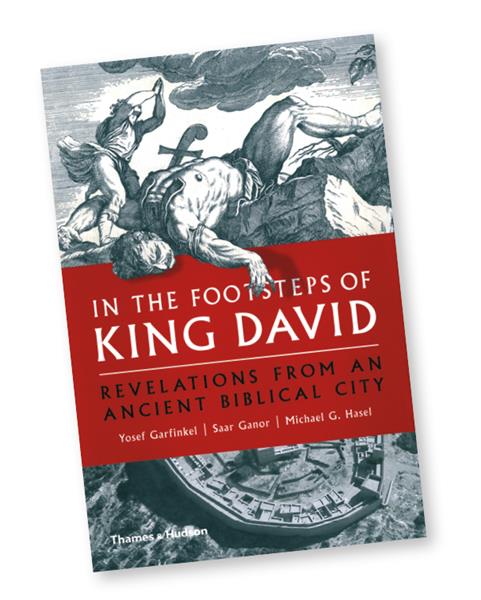
Archaeologists Yossi Garfinkel, Saar Ganor, and Michael Hasel, who directed the excavations at Khirbet Qeiyafa, have authored a very compelling and well-written book about this important early Iron Age site. In an engaging, clear, and nicely illustrated manner, the volume presents the archaeology (including the daily aspects of the excavations), major finds (with very nice illustrations), and the site’s interpretation and significance for Biblical archaeology, Biblical history, and Biblical research in general. Following a long series of scholarly publications and popular articles, this book is a comprehensive, highly readable summary of the debate over the historicity of King David and the contribution of Khirbet Qeiyafa to that controversy.
It is almost unnecessary to introduce Khirbet Qeiyafa to BAR readers. This site, which lies in the Judean Shephelah and dates in the late 11th and early 10th centuries B.C.E., has repeatedly figured in newspaper articles, public debates, museum exhibitions, and this very magazine. One issue in particular has caught the attention of many: the suggested connection between the site and the early Judahite Monarchy of the early 10th century B.C.E.
Accordingly, the authors claim that their excavations at Khirbet Qeiyafa show that the site was fortified during the reign of King David and that it was one of three major cities of the Kingdom of Judah at that time (along with Jerusalem and Hebron). The authors ultimately argue that their findings are an eloquent evidence for the historicity of the Biblical depiction of the Kingdom of David and a strong argument for the historicity of the Biblical text in general (contra the commonly accepted critical Biblical scholarship).
While I highly commend the authors for writing such an engaging book, I believe that their black-and-white interpretations—and the implications they believe can be garnered from this—are often hard to accept.
Although I see no reason why we should not accept the authors’ claim that Khirbet Qeiyafa is related to the early Judahite Kingdom, as I’ve expressed elsewhere, I find many of their other assertions highly problematic. With all due respect to the authors for their work at Khirbet Qeiyafa and their interpretations, modern Biblical research and the enormous developments in the field over the last century or so are not negated on the basis of the finds at Khirbet Qeiyafa. While one can argue that this site is evidence of the Judahite Monarchy at the time of David, this does not turn the entire Biblical text relating to that period into a clear-cut historical document; it does not nullify the fact that the Biblical text went through a complex and long process of compilation and editing before it reached the form(s) we know today.
Likewise, even if the site is to be identified as Judahite (and some would argue against this), it is important to stress that Khirbet Qeiyafa was destroyed early after its construction (probably by the Philistines from Gath, the home of Goliath that I have been excavating). This being the case, it would suggest that even if King David is responsible for the construction of this fortified site, the strongest kingdom in the region, the Kingdom of Gath, forced the Judahites to abandon it shortly after it had been built. It also seems that Judah was not able to expand westward, into the central Shephelah, until the second half of the ninth century B.C.E., when Gath was destroyed by Hazael.
Because Gath (Tell es-Safi) is the major neighboring site, I would like to make two final notes regarding the authors’ assertions about the archaeology of this site that I excavate.
First, our excavations in the past five years have demonstrated that Gath was a large site (of c. 45 to 50 hectares) already in the 11th century B.C.E., in the Iron Age IB. It is then incorrect to suggest (p. 171) that Gath’s proximity to another Philistine city, Ekron, precluded it from developing into a large urban center already in the early Iron Age. Second, I welcome the authors’ acceptance of the destruction of Iron Age IIA Gath as caused by Hazael, king of Aram-Damascus. Yossi Garfinkel has previously questioned this interpretation,1 yet it is still not clear why he has now reconsidered.
To conclude, this book is an excellent read; it conveys the excitement and interest of a major archaeological project, the process of investigation and research, and an attempt to draw a broader historical, cultural, and archaeological picture. But readers should be aware that much of the interpretation is contested by other scholars.2
Reviews: Fashioning a New Bible: Why and How?
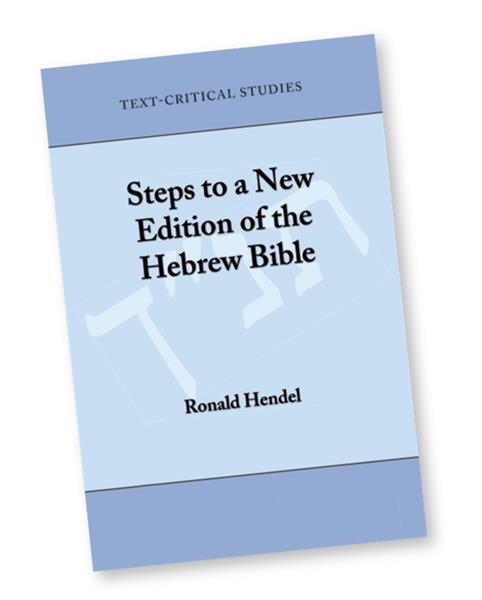
Ronald Hendel has written a wonderfully erudite book about the arcane world of textual criticism of the Hebrew Bible. He demonstrates mastery of the subject on every page, as he cites not only the standard surveys of the field (from Julius Wellhausen of yore to Emanuel Tov of today), but also more obscure and narrower studies on particular passages, along with general treatments that reach beyond Biblical studies into other fields within the humanities.
With such an opening paragraph, one might expect me to give this book a glowing review. And, of course, I would, except that I personally hold to the polar opposite view to the one promoted by Hendel.
About 20 years ago, Hendel conceived of a new project—nothing less than a new edition of the Hebrew Bible, starting from scratch. To appreciate what that entails, some background is required.
There have been two types of editions in the history of the humanities: diplomatic and eclectic. With a diplomatic edition, the scholar (or team of scholars) decides which historical manuscript is the best one. This manuscript is then painstakingly transcribed into regular printed font and presented as the main text, with any variants that appear in other manuscripts relegated to the bottom of the page, in what scholars call the critical apparatus.
For an eclectic edition, the scholars sift through all of the available manuscripts and select the best reading for each verse or passage. With this approach, the final product is posited to be the best possible reconstruction of the Urtext (the original text), whether or not such a text ever existed.
In the history of Biblical studies, the former route has dominated, with scholars typically choosing the St. Petersburg [Leningrad] Codex (L) or the Aleppo Codex (A). Hendel is bucking the trend, however. His project, known as the Hebrew Bible Critical Edition (HBCE), presents to the reader an eclectic text, with each reading justified in the critical apparatus. To his credit, Hendel has amassed a superb team of scholars to produce this edition, with one volume already published.1
The book under review is a collection of essays—almost all of them previously published—in which the author attempts to justify his approach. Hendel argues very well for the eclectic approach, and he also addresses the objections of his critics (Emanuel Tov, Hugh Williamson, et al.).
The central problem, however, remains: The produced text is one that does not exist, nor ever existed, but which rather has been fashioned by the text-critical scholar in his or her study. Hendel and his colleagues may believe that it is possible to reconstruct the Urtext, but if the field of ancient Near Eastern studies has taught us anything, such an enterprise is a “pursuit after the wind.” Not a single composition from the ancient world, for which we have multiple copies, bears a single uniform version. Instead, given the manner in which ancient texts were composed and transmitted—not by a scribe at a desk, but rather in an oral-aural manner or, to be more accurate, somewhere along the oral-written cline—we cannot speak of a single text-type, or prototype, but rather of a plurality of versions from the outset.
Scholars will learn much from this scholarly book, which stands as an important statement in support of an eclectic edition of the Biblical text. But while I was reading this book, all that came to mind was a story related to me by my teacher Cyrus Gordon. His teacher Max Margolis (on the faculty of Dropsie College) was the foremost text-critic of his day in the field of Septuagint studies with his five-part work The Book of Joshua in Greek (1931–1992) standing as his magnum opus. The work’s goal was to use all the surviving Greek manuscripts and the daughter versions (in Coptic, Ethiopic, etc.) to reconstruct the “original” Old Greek version of Joshua. One fine day (c. 1929), Gordon entered Margolis’s office for an appointment, to find him hard at work on his project, at which point, the great master put down his pen and said, “There has to be more to life than this. This truly is re’ut ruaḥ” (“pursuit after the wind,” quoting Ecclesiastes 2:11, Ecclesiastes 2:17).
Reviews: Sifting for Answers: Archaeology and the Human Story
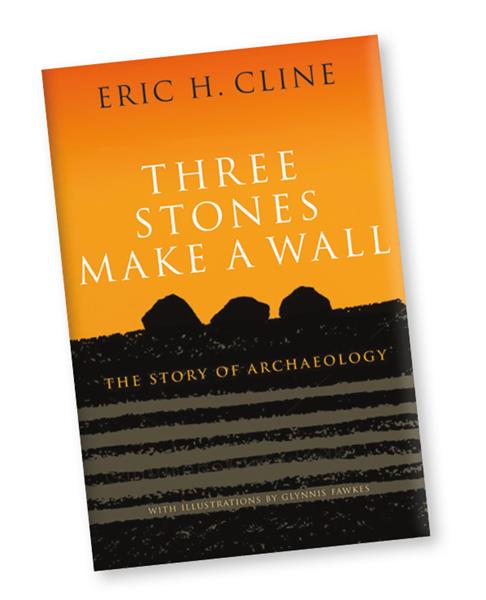
As the title of his new book promises, Eric Cline’s goal in Three Stones Make a Wall is to tell “the story of archaeology.” Fortunately for the readers of this excellent volume, Cline is a skilled storyteller who brings many of the great discoveries in world archaeology to life. He also provides an overview of archaeological theory, methodology, and policy that is informative and entertaining to lay readers and experts alike.
An archaeologist with more than 30 seasons of excavation experience, Cline is also Professor of Classics and Anthropology at The George Washington University. In 19 chapters and four interludes (called “Digging Deeper”), Cline describes important archaeological discoveries worldwide but focuses on his main areas of archaeological interest: the Middle East and the Aegean. He immediately grabs the reader’s attention with a prologue on British archaeologist Howard Carter’s discovery of the ancient Egyptian tomb of Pharaoh Tutankhamun in 1922 and holds our attention throughout Part I—“Early Archaeology and Archaeologists”—which covers discoveries at Pompeii, Troy, Egypt, Mesopotamia, and Central America and the personalities who made them. Although these will be familiar stories to many BAR readers, Cline tells them in a new way, offering anecdotes and inside information along with up-to-date research on sites first excavated a century ago or more. This approach continues through the rest of the book in sections on human origins and early farming, the Bronze Age Aegean, Greece and Rome, the Holy Land, and New World archaeology.
In the four interspersed “Digging Deeper” chapters, Cline tackles some of the questions typically asked of archaeologists: How do you know where to dig? How do you know how to dig? How old is this, and why is it preserved? Are you allowed to keep your discoveries? His responses to these questions are brief yet thoughtful, with well chosen examples. In the epilogue, “Back to the Future,” Cline challenges the reader to consider what will become of our own material culture and what future archaeologists might make of our cell phones and Starbucks. Throughout the book, Cline relates his own archaeological experiences from his early days as a volunteer digging in an ancient well in Athens to his years as Co-Director of Excavations at Megiddo and Kabri, both in Israel. Cline’s sincere enthusiasm for field archaeology, combined with his experience interpreting the past for students and the general public, makes him an ideal spokesperson for archaeologists and others invested in cultural heritage.
The endnotes in this book are substantial yet unobtrusive, and the bibliography is extensive for a popular book. Cline has done a great service by providing plenty of information for those who wish to know more about the sites and subjects he covers. The beautiful pen-and-ink illustrations by Glynnis Fawkes fit the tone of the book, but readers who are new to archaeology may have benefited from photographs of some of the sites, artifacts, and individuals he describes.
Three Stones Make a Wall is a well-paced introduction to world archaeology that is accessible and engaging for students and amateur enthusiasts. Had I not already made the decision to become an archaeologist at a relatively young age, reading this book would have sealed the deal.
Cline reminds practitioners like me, who sometimes get bogged down in the minutiae of archaeological research, of our duty to share with the public what we do. This is particularly important at a time when, as Cline notes, “we are seeing the greatest prevalence of looting of archaeological sites worldwide that has ever been documented.”
Cline’s aim in this book, perhaps most clearly expressed in his final sentences, is to help preserve and curate the past for future generations. Three Stones Make a Wall thus serves as both an up-to-date story of our human past and a call to arms to protect our shared heritage before it is too late.
Reviews: Changing Conceptions of God
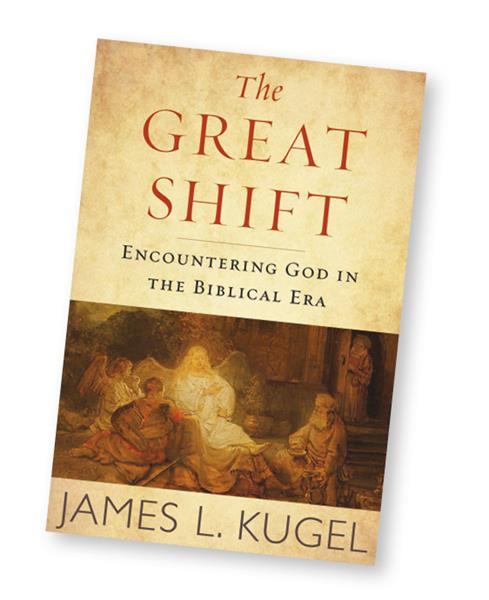
James Kugel has made important contributions to our understanding of the Hebrew Bible and its interpretive life in Judaism and Christianity. Books such as The Bible as It Was (Belknap Press of Harvard Univ. Press, 2001), Early Biblical Interpretation (The Westminster Press, 1986), and The Idea of Biblical Poetry (Yale Univ. Press, 1981)—three classics of modern scholarship—show the immense scope of his work. Reading his books—even where one disagrees with some of his arguments—is an intellectual treat.
A number of his books are aimed at non-scholars: How to Read the Bible (Free Press, 2014), The Great Poems of the Bible (Free Press, 2014), and The God of Old (Free Press, 2004). These books are distillations of scholarly insights, written in an accessible style while avoiding distorting simplifications. These books show that popularizations of scholarship can still be intellectually vigorous if one possesses Kugel’s talent for fluid literary prose and his capacious intellect.
His new book, The Great Shift, is written for non-scholars and presents his insights about the changing perceptions of God, the human self, and related topics from early to late Biblical writings. These changing perceptions are the “great shift” to which the book’s title refers. But it is also a very personal book, since Kugel’s persistent concern is how one can encounter God today in the modern Biblical religions of Judaism and Christianity while maintaining a dialogue with the Biblical testimony. This is what Kugel calls “the project,” which is his shorthand for a genuine encounter with God that acknowledges the continuities and changes in the nature of this encounter, from Biblical to modern times.
The “great shift” refers to the transformation from the concept of the “God of Old” (described in many texts of the Pentateuch and Former Prophets as an anthropomorphic God that one can see and hear) to the concept of a fully transcendent God (prominent in the Latter Prophets and Writings). This transcendent God is encountered more inwardly than outwardly and is comparatively inscrutable and distant. Kugel astutely argues that the transcendent God emerges in tandem with a more interior-oriented perception of the human self. The more the self becomes individualized with an enhanced sense of personal responsibility and spirituality (distinct from the family or tribal group), the more God becomes a transcendent being—a “wholly Other” who is distant from the scrum of the human world and yet still accessible to the human heart. In Kugel’s picture, this shift in self-consciousness facilitates a great shift in theology.
This general picture is compelling, as we can track many of these subtle changes in the intertwined perceptions of God and the self in Biblical writings. Kugel succeeds in illuminating the great shift. However, chunks of his discussion are confusing or even contradictory, with some parts at odds with others. To some degree this is because Kugel is trying to synthesize so much territory in the history of Biblical religion. But more important, it is because his aims are in some tension on a larger level. He is, on the one hand, describing Biblical religion “as it was”—that is, a historical inquiry—and, on the other hand, he is reflecting on how to have a genuine encounter with God in the present—that is, a theological inquiry. The relationship between a descriptive history and a normative theology is never clarified. Consequently, his comments circle first around one pole, then the other, and back again, yielding—at least to this reader—the occasional whiplash.
Is the encounter with the “God of Old” different from a genuine encounter with God? I think Kugel would say no, and indeed he sometimes argues that the anthropomorphic picture of God is a modern misunderstanding of ancient motifs. But if that were true, then there is no “great shift” at all, God was always a transcendent being, and the human-like descriptions in the text are a cryptic code.
In my view, the weakest part of the book is the extended argument that the anthropomorphic characteristics of God that are abundant in the Pentateuch—God walking in the Garden of Eden, God and his angels visiting with Abraham and Sarah, God or an angel wrestling with Jacob—are really spiritual visions (a kind of “holy fog”) and not really bodily representations of God. Kugel seems to want the God of Old to be a removable mask for the transcendent God of later Judaism and Christianity. In a theological sense this might be true, but as an account of the history of Israelite religion it seems dubious. It is also an overstatement to say that the portrayals of Abraham, Jacob, David, and others in these stories lack interiority.
Due to his dismissal of literary criticism, Kugel overlooks the capacity of dialogue to express psychological depth. There are literary techniques in Biblical prose that expose the characters’ interior dispositions, yielding what may be a similar sense of self as the interiority in the poetry of prophets and psalmists.
Kugel’s grand project of blending the history of Biblical religion with a theology of modern spiritual encounter is ambitious and inspiring, but sometimes it seems that he is playing a game with two different sets of rules. It is an impressive achievement to weave together history and theology, but it may require a special magic to do this successfully. At times it seems like trying to play soccer and basketball simultaneously—it’s hard to know when to kick and when to throw, and whether the result is a goal or penalty. Such complications are a consequence of Kugel’s ambitious aims and restless intelligence, which produce compelling results laced with confusion. Despite the occasional vertigo, it is a treat to follow Kugel’s fertile mind as he wrestles with the biggest of questions—who is God, and who are we?
ReViews: Through the Lens of Archaeology: A High-Resolution Image of Ancient Israel
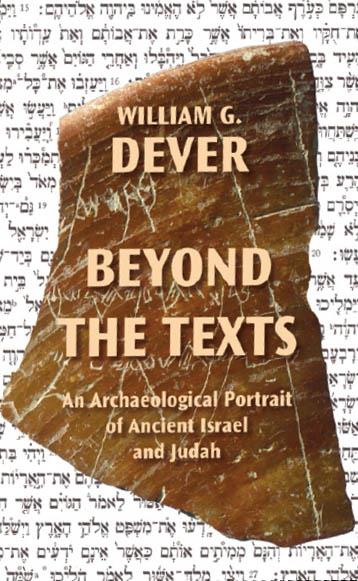
William Dever’s Beyond the Texts is a wonderful book. You need to read it if you are going to pursue a real, verifiable history of Israel, whether as a layperson or a historian. A catchier title might have been Beneath the Texts, but either way the point of the title is noteworthy, and the rest of the title is most significant of all: An Archaeological Portrait of Ancient Israel and Judah.
This review will contain praise at the beginning and challenges at the end. Dever says, “This book is intended primarily as a handbook for Biblical scholars, historians of the ancient Near East, and nonspecialists interested in the Biblical world.” Dever is justly critical of our field’s published histories for often merely restating the Bible’s own stories in current idiom to make them sound more sophisticated and “historical.” His view by the end of the book is: Archaeology is “better than any more paraphrases of the Hebrew Bible.” He’s got that right.
So here is a history through archaeology’s lens. For that, there’s no one better than William Dever. His marshaling of data is thorough and impressive: site by site, pot by pot, age by age, stratum by stratum, 750 pages, more than 130 charts and illustrations, and 700 references in the bibliography. He knows the sites, and he knows the big picture. He knows the periods, and he knows the longue durée. He engages in serious interaction with current anthropology, especially on state formation. Dever makes a solid case, now well known, against his frequent challenger Israel Finkelstein and especially against the writers known as minimalists.
(Brief excursus: That doesn’t make him a “maximalist.” A Hassidic rabbi is a maximalist. An evangelical preacher is a maximalist. Biblical and archaeological researchers who refute so-called minimalists are not maximalists. They are [what term should we use?] scholars.)
In writing for Biblical scholars and historians of the ancient Near East, he invites dialogue. In so many words, he writes, “I have invited dialogue with Biblicists, who can correct me where necessary.” That is honorable, and that is the door that I mean to open here. On merging archaeological and source-critical Biblical scholarship, he writes that “archaeology at this point can and does provide an additional tool for source criticism of the Hebrew Bible, although that fact and its potential is only beginning to be recognized.” So as this is my subject area, and as he and I have long agreed on this necessity for engagement between our two fields, I am addressing this point here.
Two things come immediately to mind. The first comes from the years when I was with the superb archaeologist Yigal Shiloh, of blessed memory, in the City of David excavations of Biblical Jerusalem. Yigal had an idea for collaboration on a book in which I would write, in each chapter, about how we would picture Jerusalem in each period if our only source were the Bible, and then he would write about that picture once we added archaeology. We lost Yigal, and the book never got written. But that idea was on the road to what Dever has in mind.
The second thing that comes to mind was a joint program I did with Dever in 1994. I spoke on “A Biblical Scholar Looks at Archaeology,” and Dever spoke on “An Archaeologist looks at the Bible.” Each from the perspective of his own area, we both ended up at the same conclusion: the need for collaboration between our fields.
And now a third example comes to mind: the University of California, San Diego, conference on the Exodus held in 2013. The list of participants (45 of them) included Dever, me, and an array of archaeologists, Biblical scholars, and experts from related fields. I can testify that I am one of the lucky beneficiaries of that gathering as it tremendously enriched my own book that followed it—not least owing to Dever’s own contribution there, which I gladly acknowledge here.
To these cases we might add some of the recent books on David and on the Exodus that draw on text and archaeology in meaningful union.
So where are the challenges to Dever’s fine book? I think that this able man whom I admire underestimated how valuable the Biblical scholars’ half of that partnership can be. He’s right when he criticizes past generations of Biblical historians. History-writing as paraphrasing is over. But I challenge his stance that archaeological data are “our primary source” while the text is of “secondary” value—a clear back seat.
Dever anticipates a criticism that he has ignored or depreciated the Hebrew Bible as a source for writing a history of ancient Israel. And he begins his answer by acknowledging that he has indeed ignored the Pentateuch because it deals only with the prehistory of Israel. That is a missed opportunity. When we do research on Genesis or Exodus, we are not just questioning whether Aaron’s staff became a serpent, whether he made a golden calf, or whether God first revealed His name to Moses. We examine those texts and find out what they reveal about the actual history of the world of the writers who produced them. I place in evidence works by Baruch Halpern, Ronald Hendel, myself, and others. Dever may disagree about what this kind of historical work can offer, but he should cover it.
Where he comes close to addressing this topic, Dever is on shaky ground. He attributes the sources of the Sinai and wilderness texts to writers who are obviously viewing those things from the seventh century. Not obvious, the J and E sources are certainly from earlier centuries. If Dever wants to sign on with some European scholars who question all of the linguistic evidence, my own work, and that of most American and Israeli scholars—he could do so (though I know that he is not in fact in their camp). In his treatment, however, he has simply stated that the seventh century is “obvious.”
Moving on from the Pentateuch, Dever’s treatment of the Biblical historians contains a cardinal sin of method: not distinguishing between historians and their sources. In the case of the Deuteronomistic history in Deuteronomy through 2 Kings, he does not distinguish between the historian’s writing and that of his sources, which are older. Once he starts down that path, it leads him into errors. He speaks of the Deuteronomistic work as “theocratic history.” But the sources that make up Deuteronomy are more diverse in their purposes than that, sometimes they are more theocratic (as in the Elijah stories) and sometimes far less (as in the Court History of David).
This error of historical method is even more hazardous on the Chronicler’s history. Dever says that he has ignored it, for “Chronicles has been regarded as secondary and of relatively little value.” That is going to come as a surprise to Baruch Halpern, Sarah Japhet, Steven McKenzie, H.G.M. Williamson, and others (including me). The Chronicler’s history of the kings of Judah from Solomon to Hezekiah comes from a source that was many centuries earlier. In places, the history of David visibly comes from the same source as the Deuteronomistic history. But don’t get me wrong. Here is where source criticism and archaeology could really work together. So, yes, Dever may have gotten something partly inaccurate here, but it actually proves his point: Working together can fine-tune both of our fields’ efforts.
Despite these challenges, I beg readers not to forget the praise at the beginning of this review. This is a marvelous book and an important book. It invites us all to digest it and engage with it. We shall all be richer by doing so.
ReViews: Fresh Takes: Linking the Exodus to Monotheism and a “Love Commandment”
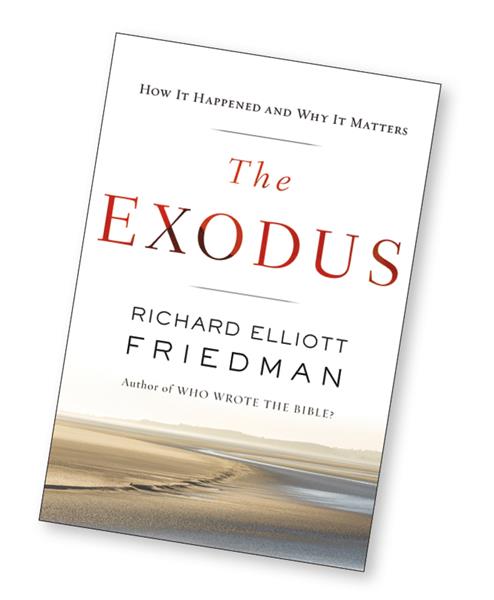
Richard Elliott Friedman—author of Who Wrote the Bible?—has done it again. Already by the end of the brief introduction, I was hooked—he had me at “Did the Exodus happen, and does it matter?” Never mind that I have been discussing the same questions with my students in class for a couple of decades now and have written about it myself; I wanted to know what Friedman was going to say.
A gifted writer, Friedman speaks directly to the reader—at times literally. “Let me ask you a question,” he says right at the beginning. “What does your intuition say: that something happened in Egypt, or that nothing happened?” Anticipating the answer given by some, he adds, “And if your answer was, ‘Why should I care?’ then the objective of this book has to be to show you what probably happened and also to show you why it matters.” He then proceeds to do exactly that, presenting the material in a series of chapters as “a work of detective non-fiction,” as he calls it. I kept expecting Sam Spade and the Maltese Falcon to appear on the next page. They never did, but they could have.
The book is full of fascinating facts, intriguing hypotheses, and interesting conundrums. Some are common knowledge, including the problem of two million people leaving Egypt all at once. Others were new to me, including the fact that only eight Israelites in the Biblical account of the Exodus have Egyptian names, and all eight are Levites, including Moses himself, which is an intriguing observation.
Above all, the material is presented with an emphasis on common sense, accompanied by Friedman’s wonderful sense of humor—or perhaps I should say, his rather gleeful levity throughout (pun intended): “People say that the Bible is the only book ever successfully written by a committee, but we also know that this is probably because the committee never held a meeting.”
Biblical Archaeology Review is the world leader in making academic discoveries and insights of the archaeology of the Biblical lands and textual study of the Bible available to a lay audience. Every word, every photo, every insight—it can all be yours right now with an All-Access membership. Subscribe today!
There are also a number of interesting asides and discussions found throughout the book, to the extent that the reader should be prepared to enjoy the journey rather than be in a hurry to get to the destination, as the Greek poet Constantine P. Cavafy once wrote. A number of these had also never occurred to me to wonder about, as I am an archaeologist rather than a Biblical scholar, but I found them to be intriguing. For instance, Friedman devotes a section of one chapter to answering the query, “Why does God speak in the plural?” and, a few pages later, discusses the equally fascinating question, “How do gods die?”
He also describes a thought experiment that was more up my alley: What if we had first discovered all of the archaeological finds and only later found a copy of the Bible (rather than already having the Bible in hand before the archaeological discoveries were made)?
Thus we would have had Sennacherib’s inscription describing his siege of Hezekiah and Jerusalem before reading the Judean report of the same event, written from their perspective (in 2 Kings and Isaiah). Similarly, we would have had the fragmentary Tel Dan inscription, which mentions the House of David, well before learning of the Biblical accounts which “give us long, detailed accounts of King David and his descendants on the throne of Judah” (in 1 and 2 Samuel, 1 and 2 Kings, and 1 and 2 Chronicles).
What would be the reaction to the discovery of such a book? Friedman suspects that some would undoubtedly claim it to be a forgery, while others would hail it as a revelation. All other things aside, it “would put flesh on the archaeological bones,” as Friedman correctly concludes.
With his engaging style, supported by superb scholarship and straightforward thinking, Friedman has succeeded in making his way through the morass of previous publications and presenting his take on how the Exodus happened and why it matters.
For those so inclined, the detailed endnotes contain additional asides and discussions, although the book can also be read without ever consulting these. Even the appendices are interesting.
Friedman has succeeded in writing one of the most enjoyable books that I have read in a long time. I won’t be alone in this opinion, for this is a book that will be a pleasure to read for anyone who picks it up, from beginner to the undergraduate student to the most erudite scholar.
ReViews: Scholarly Insights: Uncovering the Mysteries of Aramean Origins and Diversity
The people called “Arameans” are familiar to many readers of the Bible as ancient Israel’s northern neighbors and enemies, living in Haran in Genesis and mostly connected to Damascus in Samuel, Kings, and Chronicles. The Arameans were a large group of linguistically related entities that played a significant role in the history and culture of the ancient Near East. Their influence and presence spanned the Fertile Crescent. Yet some readers of the Bible in English and in other modern languages may not be familiar with them at all, since some translations, going all the way back to the Greek Septuagint, actually call them “Syrians.”
In recent years, however, the ancient Arameans have been the focus of quite a lot of historical, archaeological, and linguistic research, with conferences, publications, and even university research centers being dedicated to the study of this ancient people. The events of recent years in Syria and northern Iraq (the Arameans’ ancient homeland) have helped bring their history into the public mind. Consequently, the present volume, which focuses on the ancient Arameans’ “political history,” is a welcome summary of much of that research.
Author K. Lawson Younger, Jr., is a professor at Trinity Evangelical Divinity School and an expert on the relevant languages. With a long list of Aramean-related publications under his belt, he is certainly one of the most qualified people to write such a book.
This volume focuses on what its title calls “political history” of the Arameans, from their earliest origins to the demise of their independent entities. But it is not limited to describing such events as wars and dynastic conflicts. It describes in detail the diverse and complex Aramean socially constructed entities throughout history across large swathes of the ancient Near East.
The complexity of Aramean social structures was due, in part, to the fluidity of their tribal structures, as well as the various migrations of Aramean units across the Middle East. The other peoples with whom the Arameans interacted also had an impact on Aramean units, causing variations in their culture. The author thoroughly integrates the relations and interactions of the Arameans with other groups in the Near East, such as the Luwians, the Assyrians, and the Israelites. He utilizes the new archaeological and textual data that have come to light in the past decade.
Biblical Archaeology Review is the world leader in making academic discoveries and insights of the archaeology of the Biblical lands and textual study of the Bible available to a lay audience. Every word, every photo, every insight—it can all be yours right now with an All-Access membership. Subscribe today!
This book, however, does not deal at length with economic, religious, and other cultural aspects of the ancient Arameans. In a conversation that we had some time ago, Younger revealed to me that he is now working on a book about the religion of the Arameans, which will certainly be a welcome companion to the present volume.
Using a regional approach to investigate the wide-ranging Aramean polities, the author divides his study into four regions: the Jezirah, where Assyrian power and influence were a particular challenge; the Anatolian north Syria, where in the Iron I and II periods one encounters the Luwian-Aramean cultural symbiosis; the northern Levant (central and southern Syria)—which is still obscure in many ways; and southern Mesopotamia, where indigenous Babylonians, Chaldean groups, and the geography combined to create a very different environment for the Aramean entities.
Younger presents an impressive array of written sources and archaeological data. He also makes extended use of the Biblical materials, especially concerning the kingdom of Aram-Damascus, wading through a wide range of issues that have been at the center of debate for years: the accuracy of books such as Samuel, Kings, and Chronicles when describing the history of the kingdoms of Israel and Judah, and, inter alia, their various references to Aram-Damascus and the other Aramean states. While he does not avoid the issues, his attitude is basically positivist: He tends to accept carefully the Biblical record, unless it is disproven by other data.
So who, or what, were the Arameans? Tribes, kingdoms, or “socially constructed units”? Did they all share a common origin? As this book shows, using a vast array of sources, the Arameans were spread over a vast area, experienced different lifestyles, and were known by different names. As Younger states in his concluding words, no other people in the ancient Near East was as impacted by the Assyrians at all stages of their development as were the Arameans.
However, as he also points out, the one thing that they did all have in common, as far as we know, is the Aramaic language. And as the Assyrian Empire swallowed up all of the Aramean polities, it also ingested masses of Aramaic speakers, along with their scribes and their literary traditions.
Aramaic eventually replaced Akkadian as the lingua franca of the entire Middle East. The Aramaic language was the language of administration and commerce of the Persian Empire, the language commonly spoken in the Hellenistic Levant, the language of the earliest Christians, of the Jewish Targum, of the Talmud and the Kaddish, and of the Syriac and “Assyrian” churches. Aramaic is spoken by small communities to this day and has turned out to be the Arameans’ most lasting legacy.
K. Lawson Younger, Jr., is to be commended for bringing early Aramean history together in what is truly an excellent work of scholarship.
